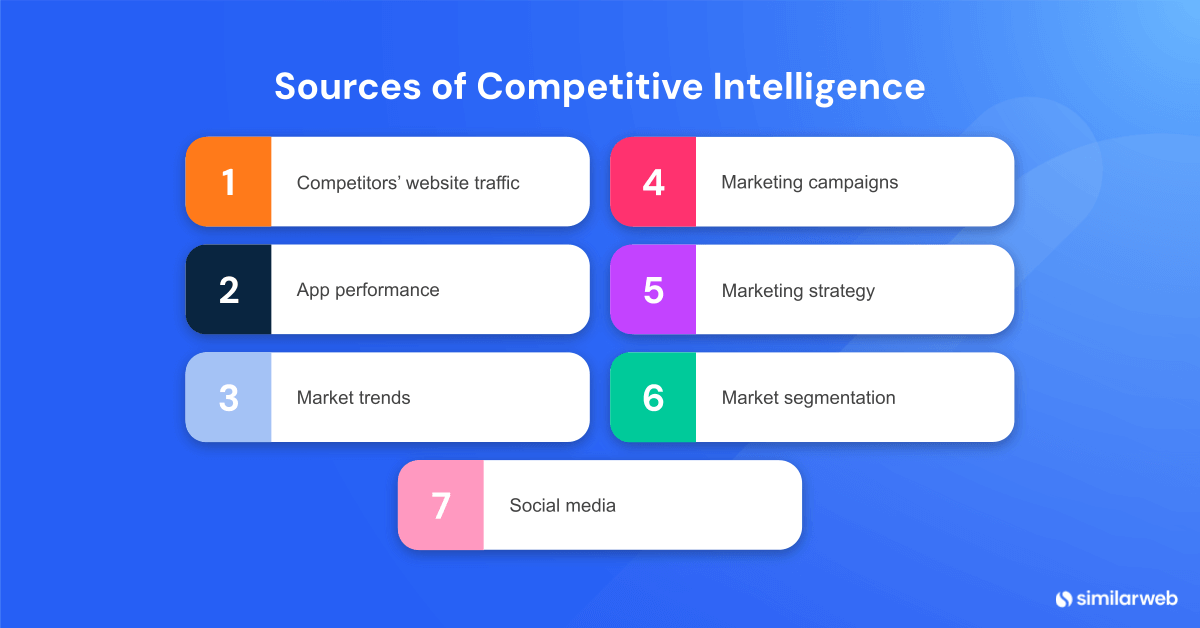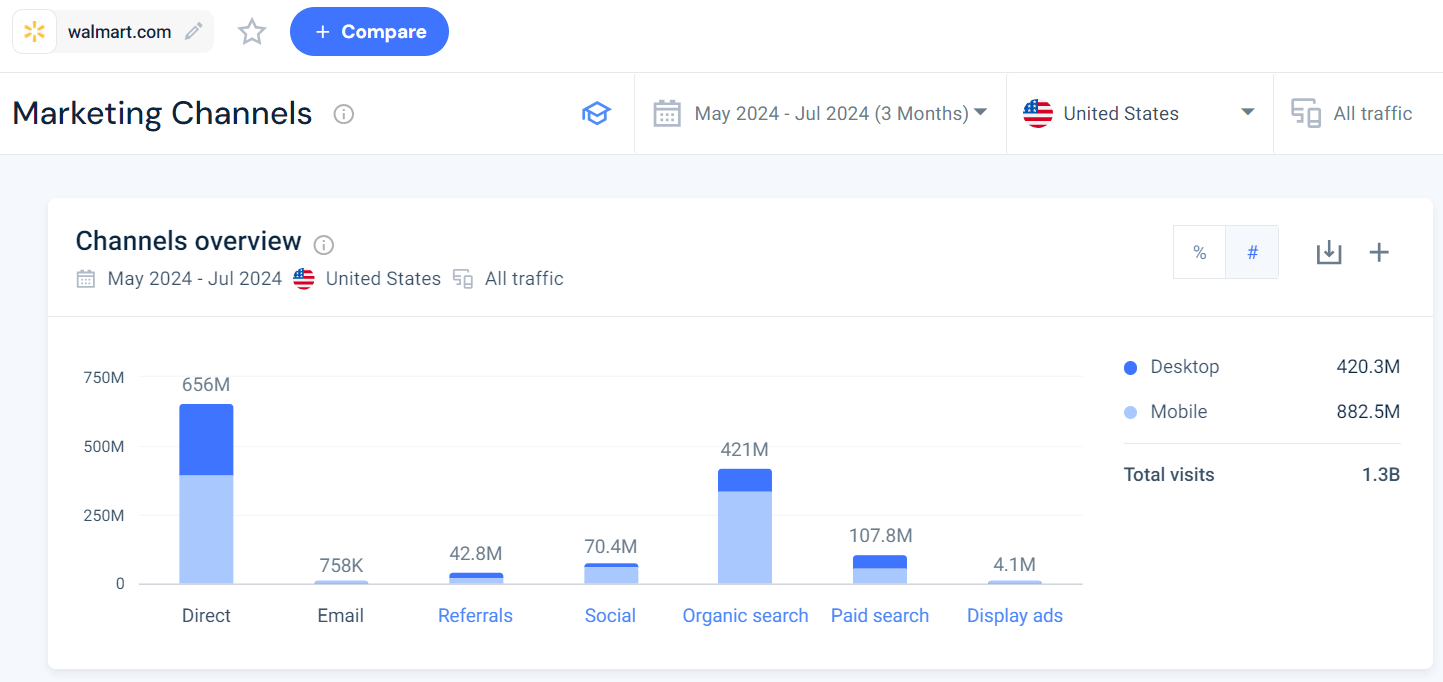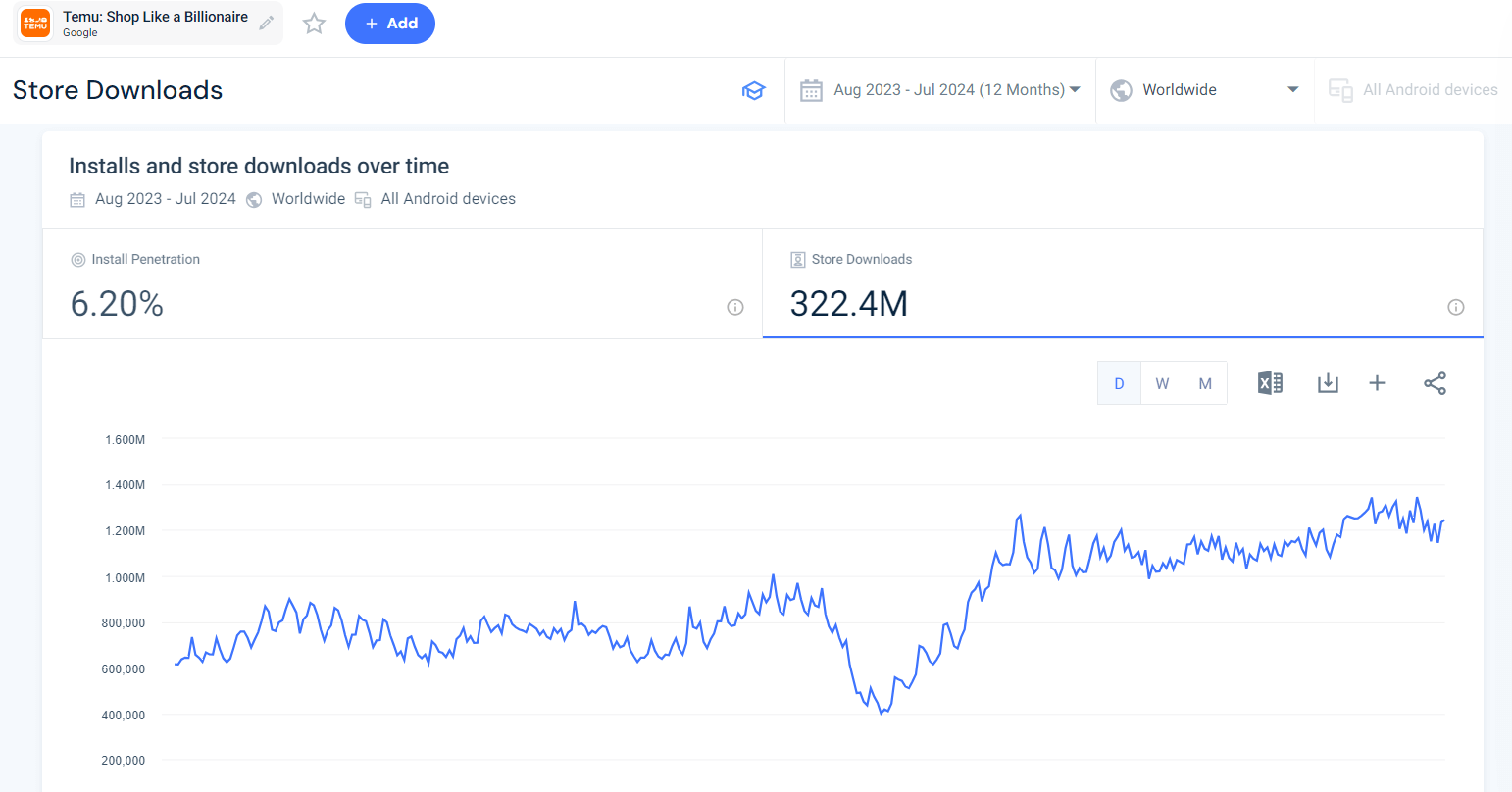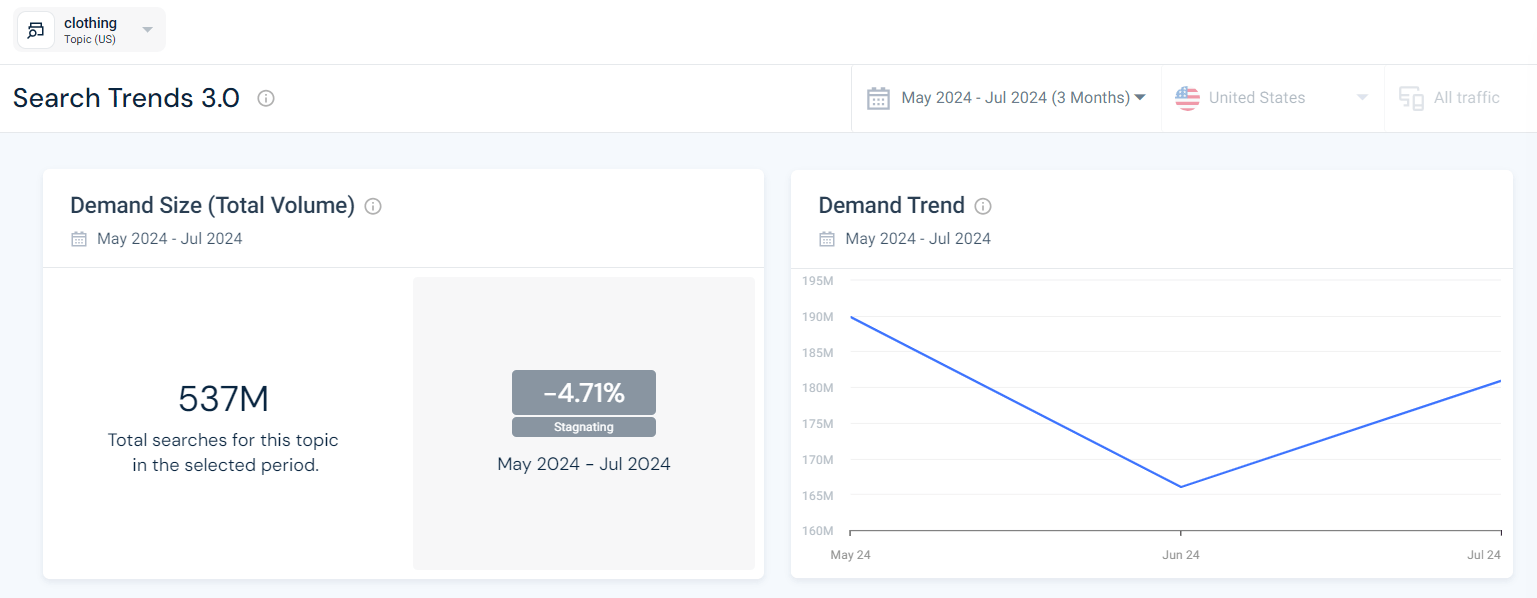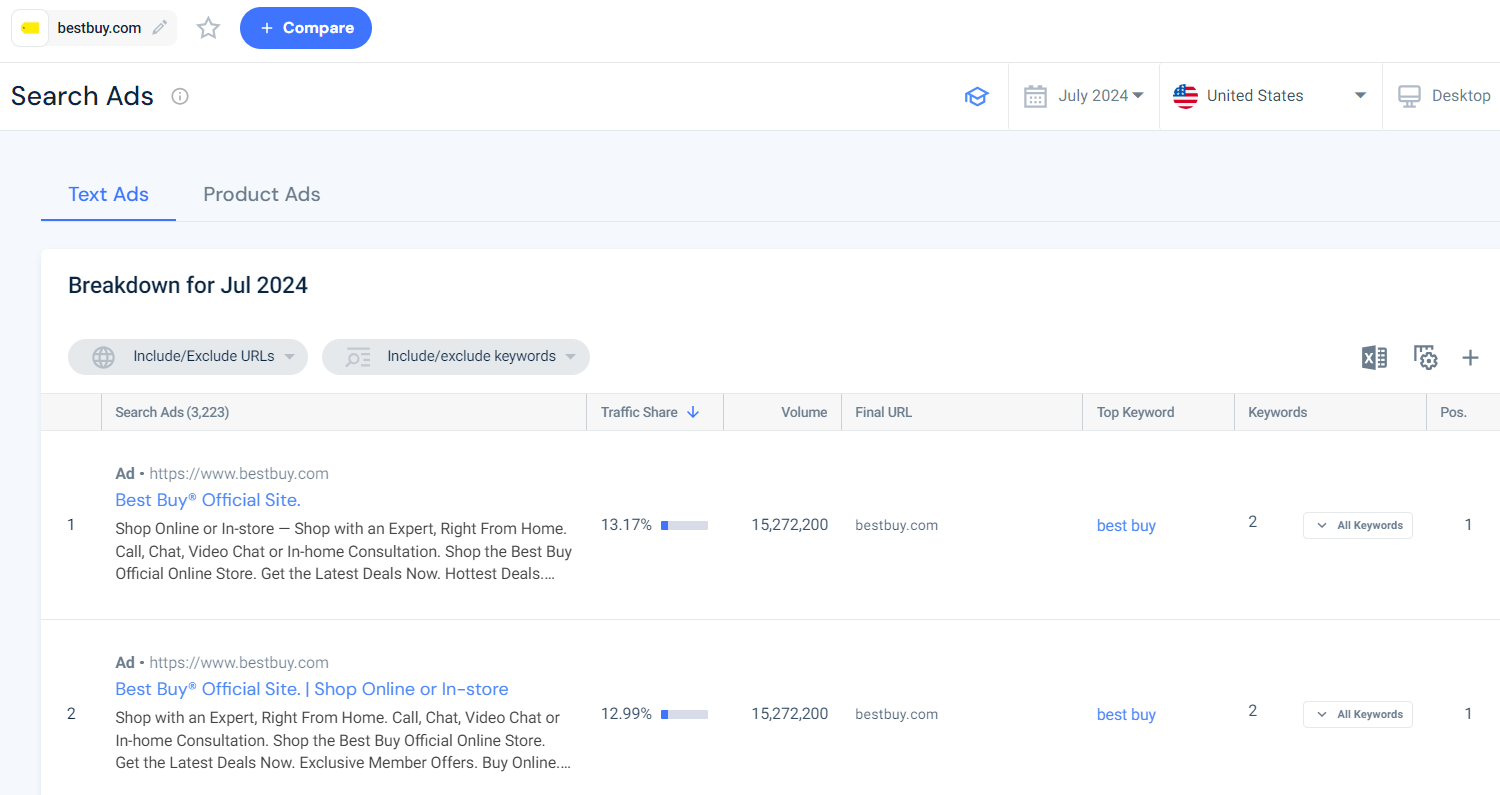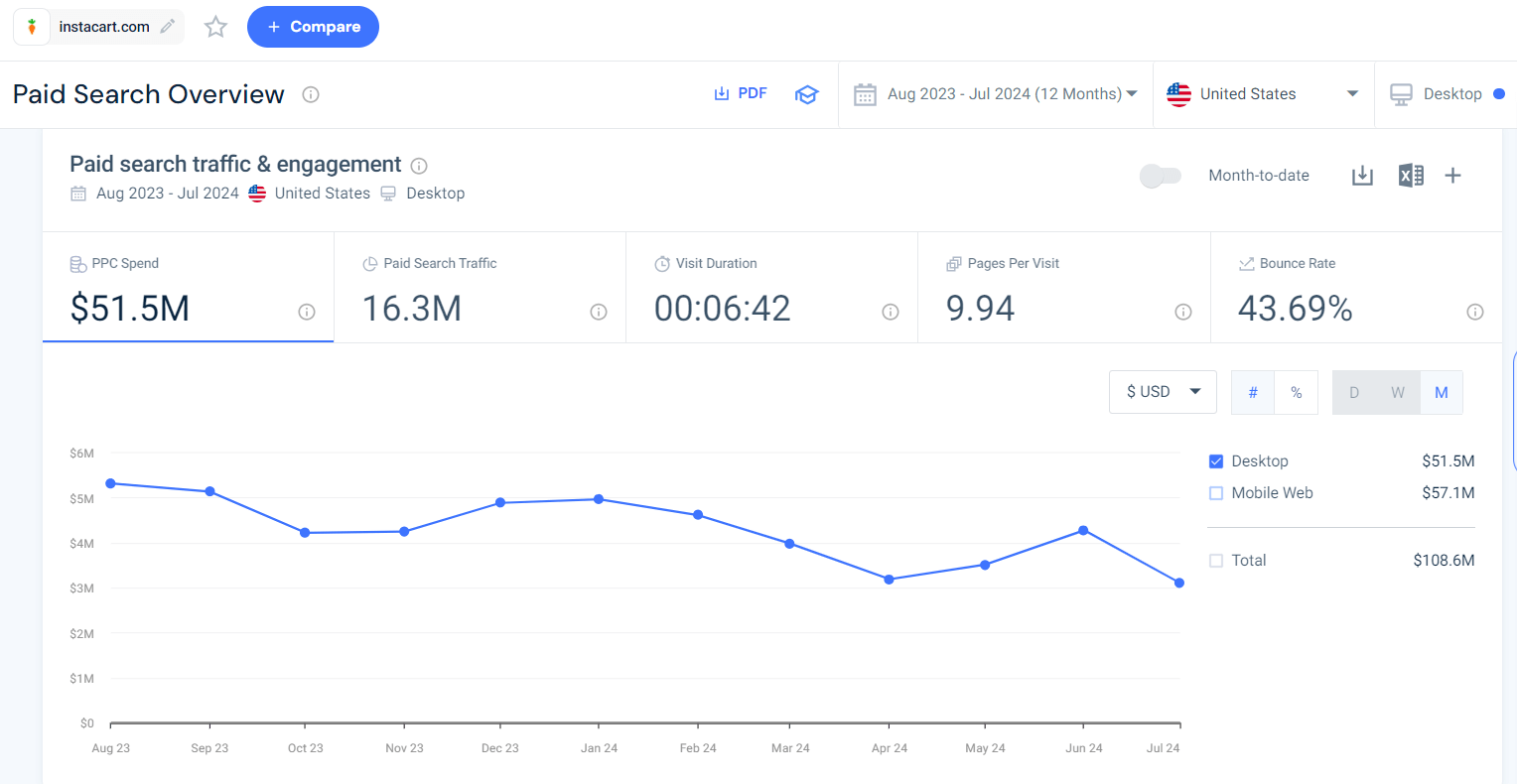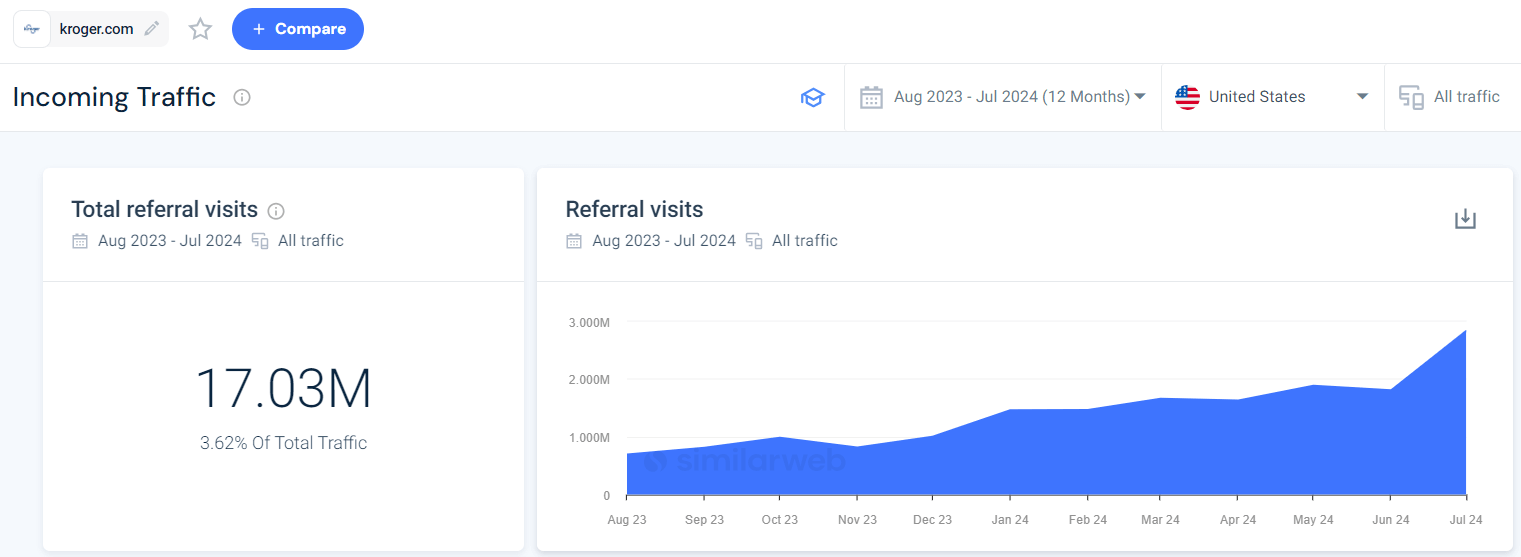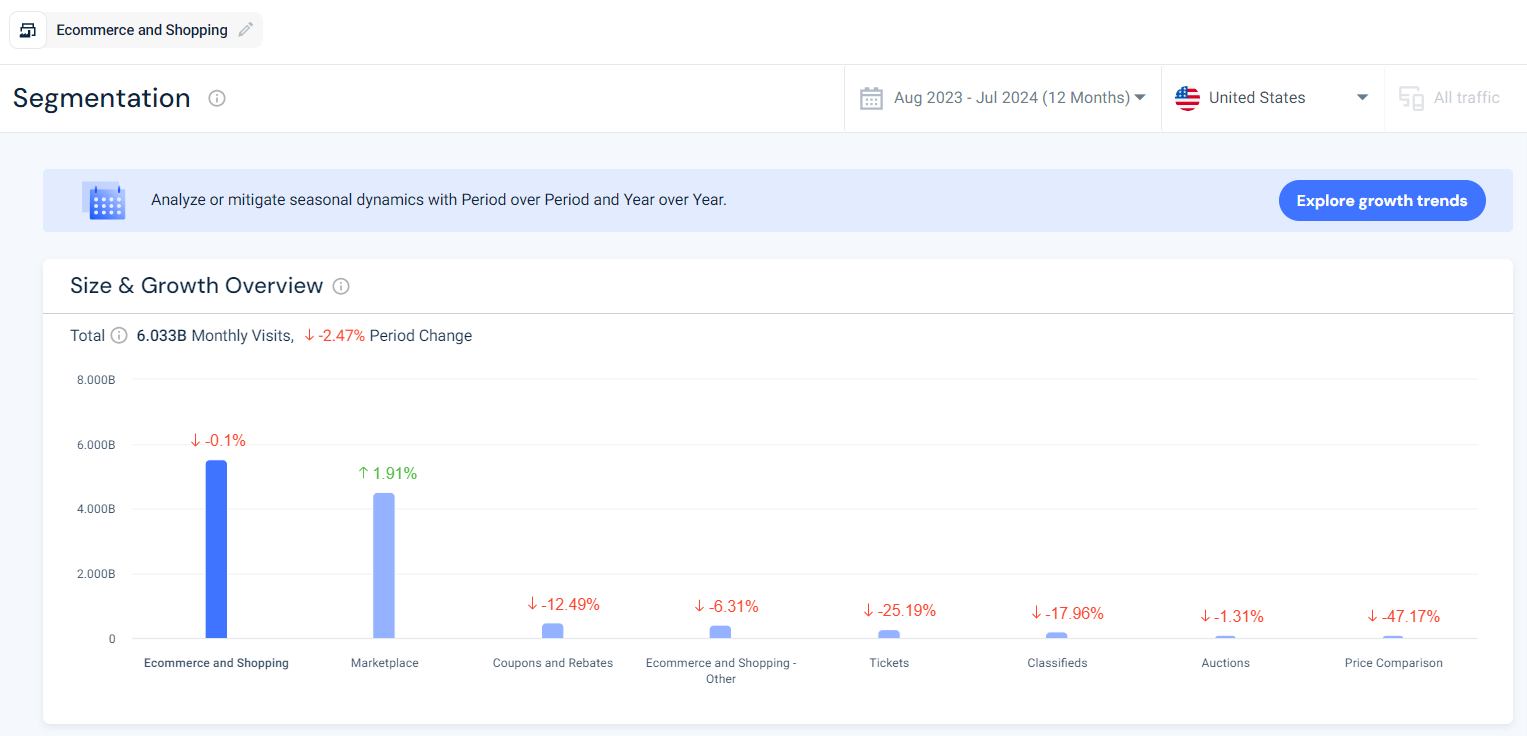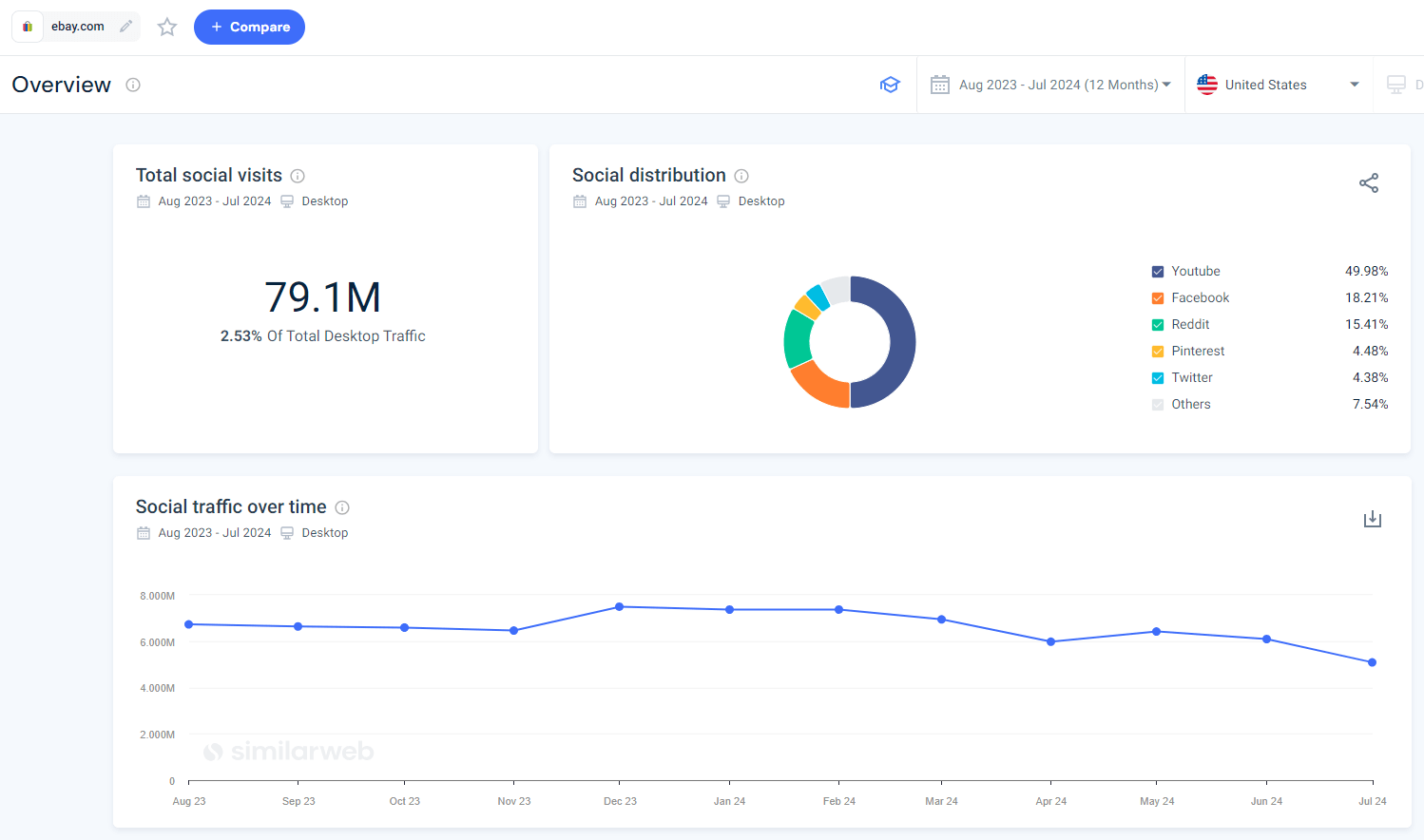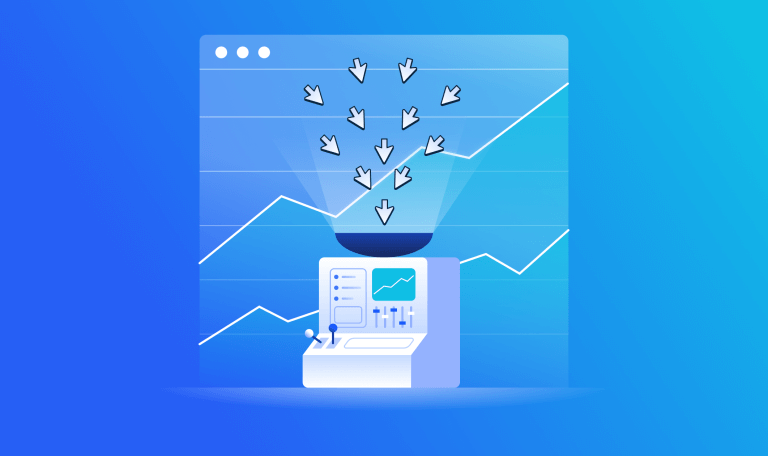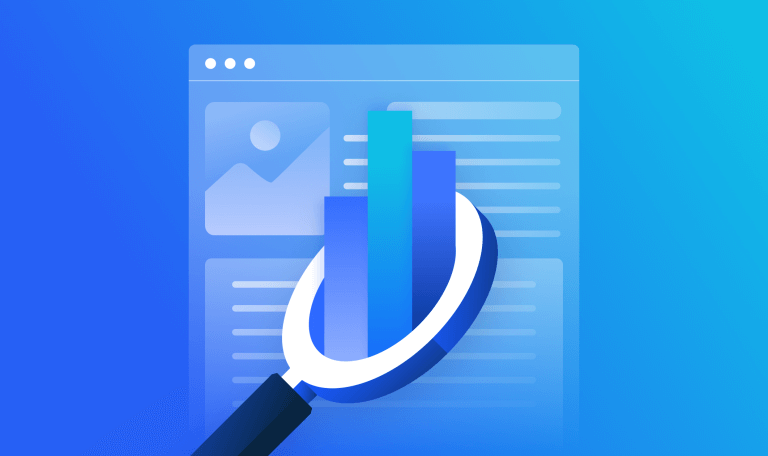 Marketing Intelligence
Marketing Intelligence
7 Competitive Intelligence Sources Every Marketer Needs to Know

In today’s dynamic business landscape, maintaining or increasing your market share requires more than just intuition – it demands actionable insights.
Competitive intelligence, a strategy already utilized by 90% of Fortune 500 companies, involves gathering and analyzing data on competitors, market trends and industry dynamics to inform your strategic decisions. This is because understanding competitors’ strengths and weaknesses empowers you to make choices that give your business a competitive advantage.
This guide highlights the most effective competitive intelligence resources to help you outmaneuver your competitors. From website traffic analysis and app performance insights to tracking market trends and dissecting social media strategies, we’ll cover the key areas that offer invaluable insights.
Whether you’re an up-and-coming startup or an established enterprise, by leveraging these intelligence sources, you’ll be better equipped to anticipate market shifts, refine your approach, make data-driven decisions and strategically position your business for success.
The sources of competitive intelligence
To thrive in today’s business environment, companies must leverage insights from competitors’ successful strategies. By tapping into various data sources, businesses can uncover consumer trends, shifts in the market, and evolving customer preferences.
Here are seven top sources to guide your strategic planning:
1. Competitors’ website traffic
The most easily accessible form of competitive intelligence lies in competitor website traffic analysis. By tracking your competitor’s online presence, you can benchmark your performance against theirs across many marketing channels.
Similarweb is a competitor analysis tool that will help you gain insights into their traffic, giving you an idea of the major drivers and how they’ve changed over time.
Key engagement metrics to track:
- Traffic Sources: Be aware of where your competitors’ traffic is coming from, whether organic, paid, direct or social.
- Visitor Engagement: Make use of metrics like bounce rate, visit duration, and pages per visit to analyze visitor engagement.
- Referral Traffic: Get to know which sites are sending traffic to your competitors’ sites. This could open the doors for future potential for partnerships.
2. App performance
App intelligence tools provide insights into app installs, downloads, and user engagement. You can benchmark your app’s performance against competitors and identify areas of improvement and growth.
Most important data to gather:
- Install and Download Trends: Get informed about the frequency of users downloading your competitors’ apps.
- App Engagement Metrics: It provides data on the user activity within the app, such as session length, retention rates, and in-app purchases.
- Market Penetration: This gives you an insight into how well the apps of your competitors are performing in certain regions and demographics.
3. Market trends
Business decisions should always be made a step ahead of market trends. Demand analysis tools will help you determine the latest consumer needs and preferences, while market analysis tools give a wider view of industry-wide performance.
Demand analysis
If you want your business to stay competitive and responsive to the needs of your consumers, then it is important for you to understand market trends.
One of the most integral parts of the process of analyzing market trends is demand analysis. This means extracting deep insights into what consumers want, how their preferences change, and how these trends are impacting the market with data-driven tools.
You can perform this specific competitive analysis using tools like Similarweb’s Demand Analysis, which provides consumer interest and behavior data across industries. With this tool, your business will be able to track and forecast changes in consumer demand with the help of search trends, online behavior, and market movements.
Let’s say you have a D2C fashion brand and are, say, looking to forecast the popularity of a new clothing line for women.
Here’s what you can do using Similarweb’s Demand Analysis:
- Track search volume: Keep a tab on the search volume for specific keywords relevant to your clothing line in gauging consumer interest.
- Analyze customer behavior: See how many times the customer visited product pages, their browsing habits, details of the time spent, and overall engagement with similar products.
- Discover emerging trends: Know what is gaining traction in other regions so your company can change its offerings to match these emerging market demands.
- Demand planning: Use historical data and predictive analytics for demand forecasting. This will help your company effectively control your inventory, marketing efforts, and pricing strategies.
Market analysis
If you’re running a business, you must be informed not only about your performance but also about how the wider industry is evolving. Market analysis concerns the assessment of market performance and engagement data at an industry level that gives a holistic view of where your company stands against your competition, and how trends are bending the market landscape.
Similarweb’s Market Performance module provides views on the industry level of performance, allowing your business to track trends, benchmark against your competitors, and highlight or create opportunities for growth.
With this market performance data, it becomes easier to make informed strategic decisions regarding optimization efforts that need to be done in marketing and appropriate resource allocation.
Key aspects of market analysis:
- Industry Benchmarking: Compare essential metrics such as website traffic, market share, engagement rates and period-over-period (PoP) growth with those of leading competitors and industry standards. This comparison highlights areas where your business excels and identifies opportunities for improvement, enabling you to fine-tune your strategies.
- Traffic Sources Analysis: Identify the most impactful traffic sources in your industry, whether they come from organic search, paid campaigns, social media or direct visits. Understanding where high-value traffic originates allows you to optimize your marketing strategies by focusing on the channels that yield the best results.
- Engagement Metrics: Evaluate user interactions on your website by comparing metrics like visit duration, pages per visit and bounce rates against industry benchmarks. High engagement indicates strong user interest and satisfaction, indicating website stickiness – suggesting that your website content and user experience are effective. Conversely, low engagement may signal the need for improvements in content quality or site usability.
- Market Dynamics: Stay informed about shifts in market dynamics, including changes in market size, consumer behavior and the emergence of new competitors. Being aware of these factors allows your business to adapt and innovate. Effective market analysis typically involves a systematic process, often broken down into six key steps, to ensure a comprehensive understanding of your market environment.
- Industry Benchmarking: Compare your key metrics against those of leading competitors and the industry average. This will help in pointing out where you excel or are in need of improvement.
4. Marketing campaigns
You need to understand and analyze your competitors’ marketing campaigns in order to optimize your own strategies. By using the right tool, you will be better positioned to gain insights and make more informed decisions about your marketing strategies.
Search ads analysis
With the help of Similarweb’s Search Ads Analytics, you’ll be able to get a very detailed picture regarding the targeted ads of your competitors, such as the keywords they are bidding for, the ad copy, and how these kinds of ads have been performing over time. This allows you to specify successful strategies, avoid expensive bidding wars, and you could even find new keyword opportunities.
Paid landing pages
Similarweb also gives you the top paid landing pages your competitors are using. Since you’ll have a chance to analyze these landing pages, you can learn about design elements, content, and calls to action that seem to make most of their traffic convert.
PPC spend analysis
Knowing how much your competitor is spending on PPC will tell you where exactly they’re placing their budget. This can help you understand the focus areas and the competitive priorities that they have in place.
Using Similarweb’s PPC Spend insights, you’ll be able to track precisely how much your competitors are investing in paid search and identify trends in their spending behavior:
5. Marketing strategy
Knowing the strategies that your competitors use in marketing is relevant to any business that wants to stay ahead of the competition. Knowing their marketing channels gives insight into how they choose to allocate their resources across different platforms.
Marketing Channels Overview
With Similarweb’s Marketing Channels Overview, you have access to tools that provide a broad view of how your competitors distribute their efforts across organic search, paid search, referrals, social media, and direct traffic.
You’ll be able to determine the channels that drive the most considerable volume of traffic for every competitor, and you will be better prepared to pivot your strategy to the most effective marketing channels.
Organic Search Overview
Learn what real keywords drive traffic to their sites and exactly how visible they really are in search engines. Armed with this information, you’ll be able to detect high-impact keywords, discover weak spots within your competitors’ SEO strategy, and shift your organic search to achieve greater rankings and more considerable traffic.
Paid Search Overview
Paid search is another critical area where one can view data. Similarweb’s Paid Search Overview contains information related to the keywords your competitors are bidding on, their ad spend and PPC performance. That gives you an idea of what paid strategies are specifically working for them so you can make the optimization of your PPC campaigns much better.
Referrals Overview
One thing that often gets overlooked is referral traffic. This can be a large source of engagement, so it helps to know which websites are referring users to your competitors using Similarweb’s Referrals Overview page.
By knowing these referral sources, you’ll be able to make out possible partnership opportunities or get good backlinks that could increase your site traffic and authority.
6. Market segmentation
Market segmentation is a powerful tool for pinpointing the different needs and behaviors across a broad market, thus helping you to tailor your strategy more effectively. You can get an idea of both potential threats and opportunities that are likely to affect your business by estimating the size and growth of various market segments.
Assessing market segments
Similarweb’s Market Segmentation feature could help you easily find size and growth overviews and key characteristics of various segments. The analysis will tell you your biggest concentrations of target audiences and how these segments are shifting.
Rapid growth in some segments could indicate an opportunity in product development or marketing campaigns. On the other hand, those that are not increasing or just slightly moving might indicate sections from where you should withdraw and cut your investment.
Identifying growth opportunities
Identifying emerging segments can provide you with an opportunity to empower business growth. For example, if one target demographic indicated a higher demand for some category of product, it would be possible to develop or adjust your marketing and product development efforts to better serve this demographic segment. This then allows you to take action on new and developing trends ahead of your competition and may give your brand the edge needed in that segment.
Recognizing potential threats
On the other hand, segment data can also reveal threats on the horizon. For instance, if a segment that was performing very well is now gradually shrinking, or a competitor is taking huge market share in a critical segment, then this signals that you have to change your strategy.
Being aware of these shifts thanks to key data like this, you can make informed decisions to mitigate the risks by either changing resources or simply refining your value proposition.
7. Social media
Keeping track of your competitors’ social media activities is another excellent way to delve into their marketing strategies and understand how they communicate with their audience. You could get visibility on their most successful campaigns on social media and their general brand positioning through their posts, public discussions and product presentations.
Competitor social media activity
Knowing what your competitors are posting on social media gives insight into their content strategy. This may be the types of posts they are creating, whether they’re promotional in nature, user-engagement-oriented or thought leadership-oriented pieces.
Knowing how often your rivals post online, what they post about, and even how they are visually displaying products can aid your understanding of what works best for them. This will help to benchmark how well their campaigns are working on the basis of the engagement metrics of the posts in the form of likes, shares, and comments, and will help in deciding what content strategies could be replicated or improved upon in your efforts.
Social media traffic analysis
Similarweb’s Social Media Traffic Analysis can provide in-depth information on the type of traffic your competitors receive from any social platform.
With this derived data, you can check which kind of social networks are really driving the most traffic to their websites. For example, if one competitor is receiving heavy traffic from Instagram, then that means they are running an effective visual content strategy. On the other hand, strong traffic from LinkedIn may indicate a focus on B2B content and relationship building.
This information allows you to understand which platforms your industry resonates most with and thus where you should build your social media efforts:
Competitive Intelligence: Your key to long-term success
Competitive intelligence is essential for rising above crowded markets. By tapping into multiple sources, using tools like Similarweb, you can gather in-depth insights into your competitors’ strategies and market positioning. These data-driven insights empower you to identify emerging opportunities, mitigate threats and fine-tune your own strategies.
To achieve this, start by understanding your competitive landscape, building a plan to outsmart rivals, and creating high-quality, high-ranking content.
The key ingredient here is fresh insights, and with Similarweb Digital Data, you can:
- Understand your competitive landscape and market dynamics
- Uncover your competitors’ winning marketing strategies
- Benchmark against top-performing and up-and-coming players
FAQs
What is the role of competitive intelligence in the success of my business?
Competitive intelligence is a business success booster. It provides knowledge about competitive market dynamics; insights into strategies and industry trend information allow you to know and anticipate changes, thereby accurately being aware of how to capitalize on and discern what opportunities to be involved in or make decisions on to improve your competitive position.
How is competitive intelligence useful for making strategic decisions?
Competitive intelligence gives actionable insights into the strategies, market trends, and consumer behaviors that your competitors are utilizing. Having all these insights will allow businesses to make informed decisions that are in alignment with market realities.
What methods can be used to gather competitive intelligence without specific tools?
Competitive intelligence can be gained through a variety of means: publicly available data analysis, questionnaires, state-of-the-industry news, monitoring of trade shows, financial report review, and networking with industry experts. The techniques allow the business to gain valuable information without the use of any specialized tools.
How can businesses use competitive intelligence to improve their marketing strategies?
Competitive intelligence allows a company to benchmark its marketing efforts against its competitors, which eventually helps it tap the strengths and weaknesses lying in the strategy – to further polish the approach towards better meeting market demands.
Your full marketing toolkit for a winning strategy
The ultimate solution to help you build the best digital strategy
